Summary
- Pockets are more than just functional. They add style and personality to garments.
- From classic designs to creative touches, pockets can transform a piece into something unique.
- Interested in creating all types of pockets easily? Explore the complete solutions of Audaces360, start your free trial today!
As a pattern maker, knowing different types of pockets is a key differentiator. Understanding these options empowers you to bring a collection’s identity to life.
Each type has unique features and applications. And this article will show you how they function and when to best incorporate them into your designs.
Get ready to explore different pocket styles in detail! By the end, you’ll have all the knowledge you need to make confident choices.
Happy reading!
Sumário
Why is it important to know the different types of pockets?
Pockets are more than just a place to store items. Depending on their type and placement, they serve different functions, like a decorative touch or creating a more balanced look.
Each one of them has its own purpose. For example, patch pockets are simple and functional, while welt pockets offer a sleek, formal look.
That’s why choosing the right type of pocket ensures the garment meets the needs of the wearer. It’s about combining function with design.
They can also add character to clothing. The right choice can make a plain piece look more interesting. Decorative pockets, like flap or zipper styles, bring unique details to a design.
It’s important to consider that fashion trends often influence the styles of pockets. Oversized ones are popular in streetwear, while minimalist designs suit clean-cut outfits.
Staying updated on trends helps you create garments that appeal to your audience and stand out in the market.
Finally, this small piece of fabric can even turn a simple garment into a statement piece. Bold shapes, contrasting fabrics, or creative placements draw attention.
A unique pocket design can make your creation stunning.
Knowing the different types of pockets gives you creative freedom. It allows you to develop one-of-a-kind patterns. It’s a skill every pattern maker should have!
Learn more: Explore the main types of patterns for fashion manufacturing
8 types of pockets to apply to your patterns
Let’s explore the 8 main types of pockets you can use to add function and style to your developments:
1) Side seam pocket
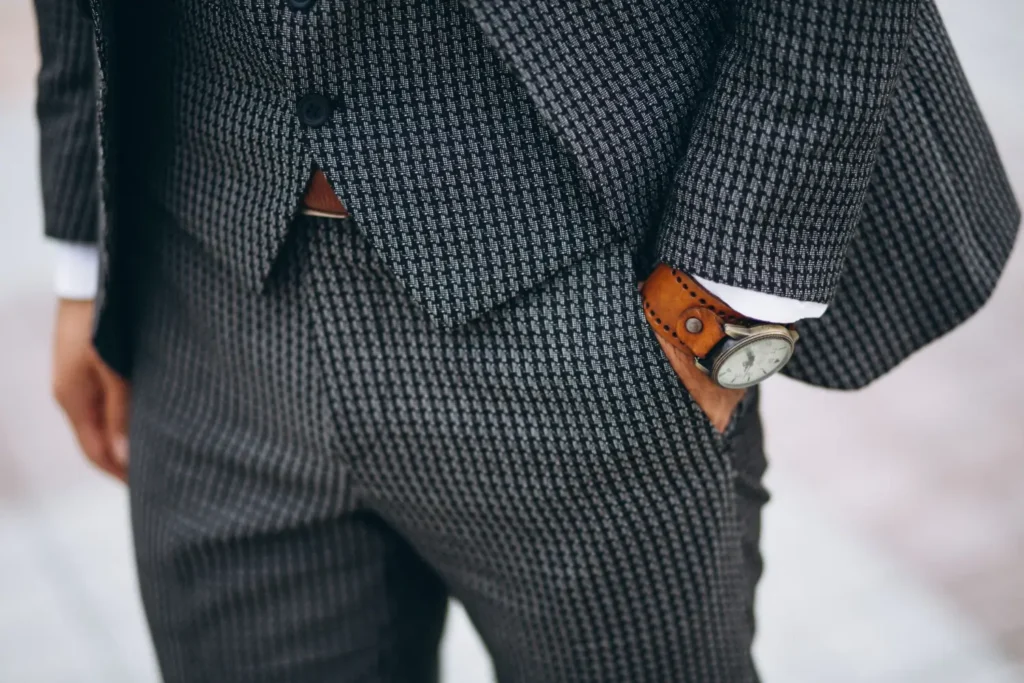
The side seam pocket is classic and discreet. It’s hidden within the seam of a garment, making it almost invisible. This pocket is perfect for clean and minimalist designs.
Its main purpose is functionality. Side seam pockets are great for everyday use, offering a convenient space for small items. You’ll often find them in tailored garments, skirts, and trousers.
Adding a side seam pocket to your pattern is simple. You can adjust its size and placement to suit the garment. It’s a versatile choice that works for casual and formal designs alike.
This pocket style doesn’t just add practicality. It also enhances comfort without disrupting the garment’s silhouette. It’s a must-know for any pattern maker looking to combine utility with subtle design.
Learn more: What is pattern design and how to create it from scratch?
2) Patch pocket
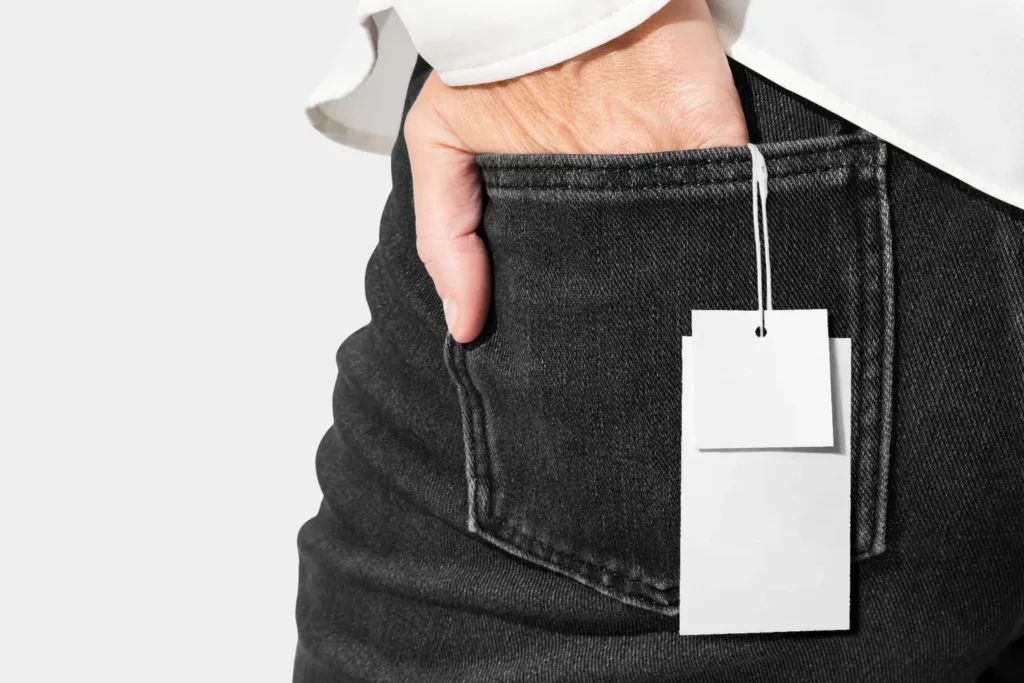
This is one of the most popular types of pockets. It’s a simple design made by sewing a fabric piece directly onto the garment.
A popular example of a patch pocket is the one found on the back of jeans. These pockets are sturdy and practical, making them ideal for everyday wear.
They also serve as a canvas for decorative stitching, adding character to the garment.
Patch pockets are versatile and you can place them almost anywhere. You’ll often see them on shirts, jackets, skirts, and even dresses. Their size and shape can be customized to match the style of the piece.
This type of pocket is perfect for casual designs. It’s easy to sew and can be made from the same fabric as the garment or a contrasting one for a bold look.
Learn more: Learn how to create denim patterns for your next collection
3) Welt pocket
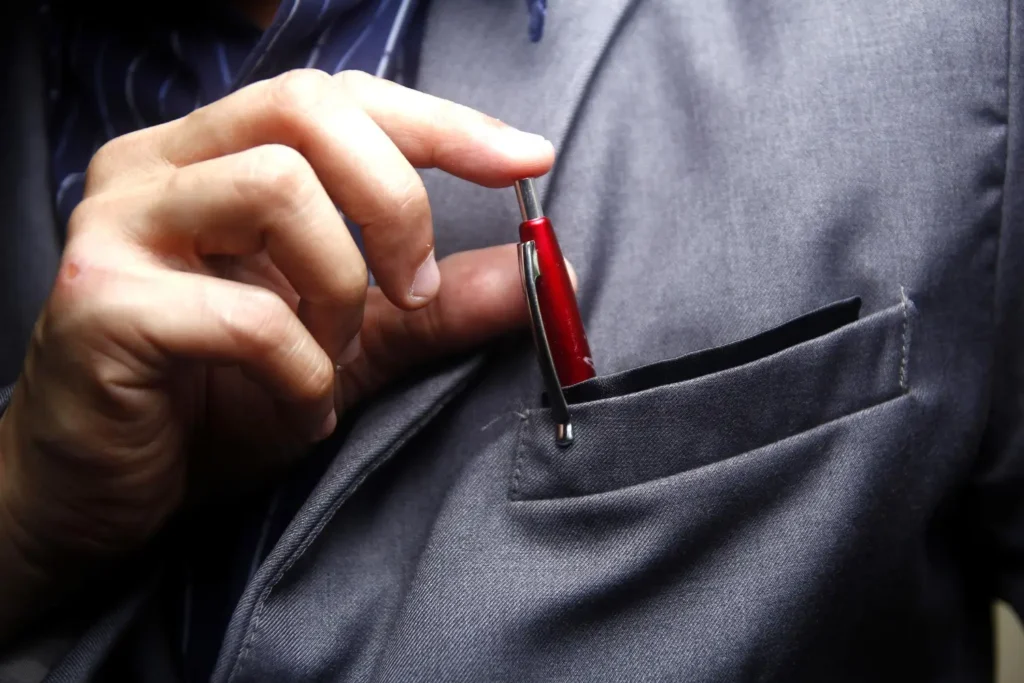
The welt pocket is a sleek and elegant choice. It features a narrow opening, reinforced with fabric strips called welts. This pocket is common in tailored garments for a polished look.
You’ll commonly find welt pockets on suit jackets, trousers, and coats. You can also apply them on pieces such as a box pleat skirt, for a refined touch.
The clean design makes it a favorite for formal and professional wear.
However, creating a welt pocket requires precision. The pocket opening must be neatly cut and reinforced to maintain its shape.
While it takes more effort to sew, the result is a durable and stylish pocket that elevates the garment.
Learn more: 4 types of pleats to take your designs to the next level
4) Flap pocket
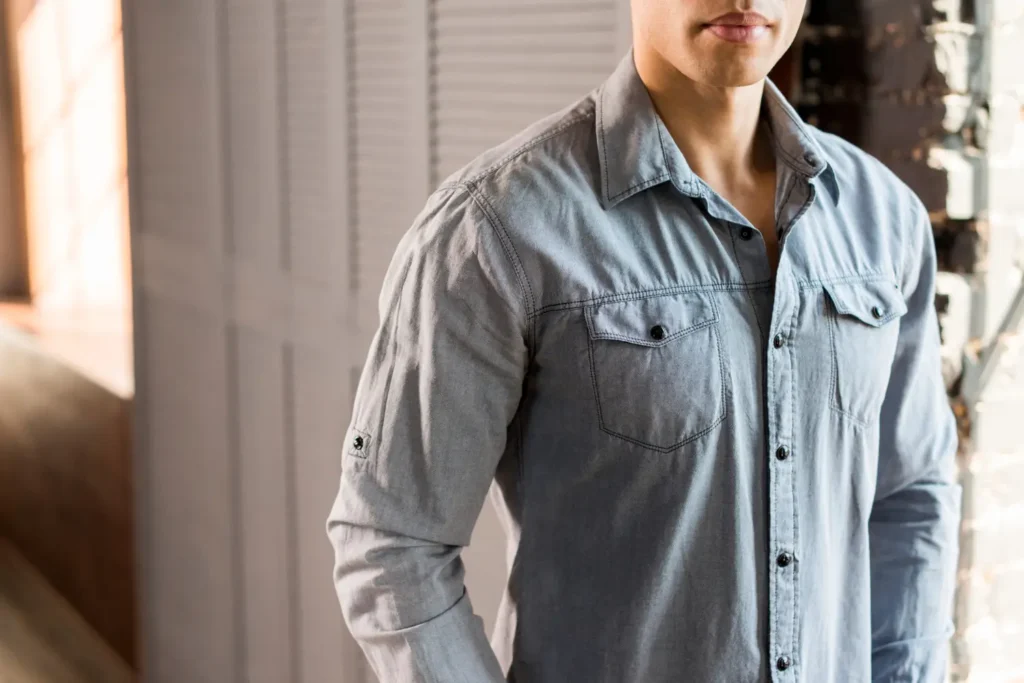
Flap pockets are practical and stylish. They contain a fabric flap that covers the pocket opening. This design adds extra security and visual interest to the garment.
They are often paired with bellows pockets, which have expandable sides for extra storage. You’ll also see the fabric flap in cargo pockets on utility pants and jackets.
Overall, including a flap pocket in your pattern is straightforward. The flap can be rectangular, curved, or shaped to match the garment’s style. It’s often secured with buttons, snaps, or Velcro for utility.
This type of pocket combines function and style. Whether on a shirt or a pair of cargo pants, flap pockets bring versatility to your designs.
They’re an excellent choice for pattern makers looking to balance practicality and detail.
5) Kangaroo pocket
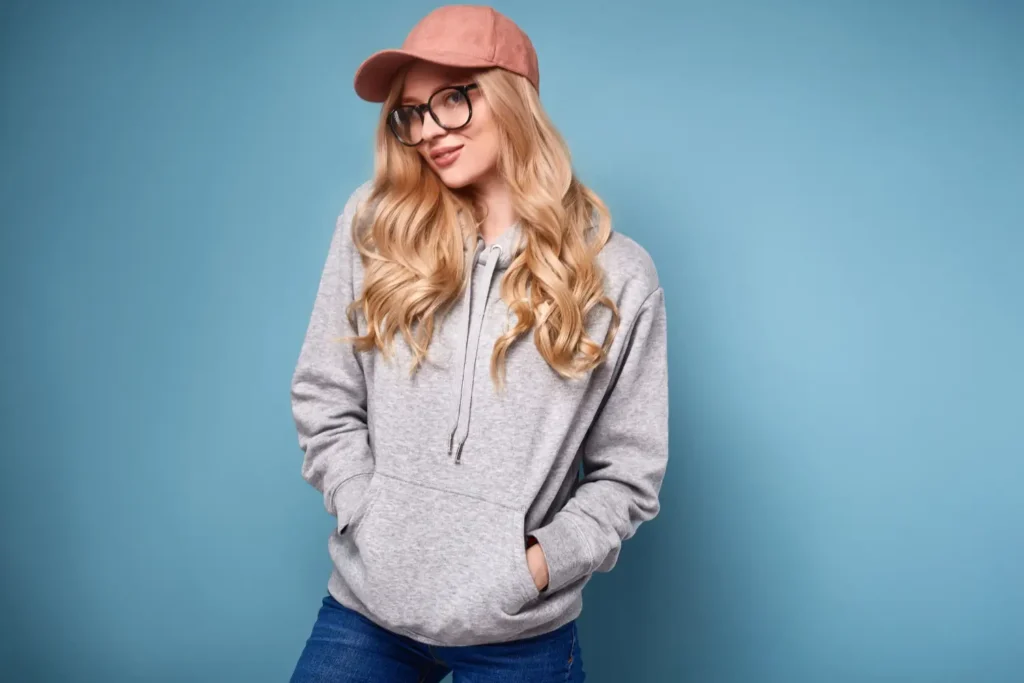
The kangaroo pocket is a single, large pocket. It’s sewn onto the front of a garment with openings on both sides. This pocket is common on hoodies and sweatshirts.
It’s a practical and casual design. The large pocket provides space to keep hands warm or carry small items. It’s perfect for everyday wear.
Kangaroo pockets are relatively easy to add to patterns. The openings should be wide enough for comfort and ease of use.
This type of pocket adds a sporty and cozy vibe to clothing. Whether for loungewear or activewear, the kangaroo pocket is a great option for casual designs.
6) Slash pocket
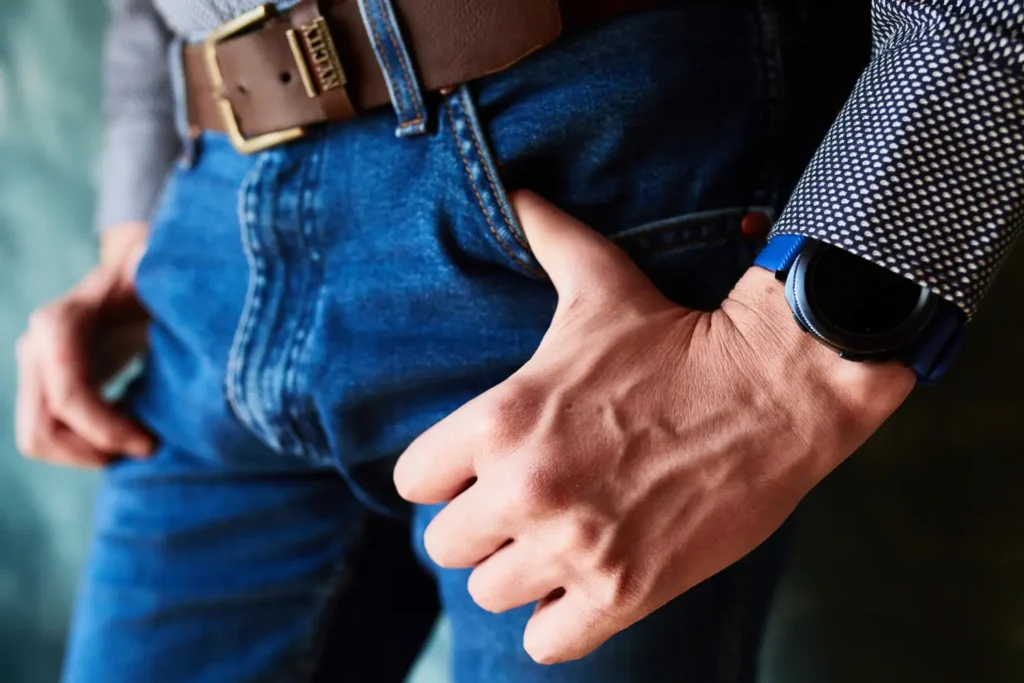
This type of pocket has an angled cut made directly into the garment fabric. The diagonal opening follows the garment seam for a clean look.
It’s common in trousers, skirts, and jackets. Its angled design makes it easy to slip your hands or small items inside. Designers consider this choice both practical and stylish.
Applying a slash pocket to your pattern requires attention. The opening must align perfectly with the seam for a perfect finish. Meanwhile, reinforcing the edges ensures durability.
Slash pockets are versatile and suit both casual and formal designs. Their subtle design enhances the garment without drawing too much attention.
Learn more: 4 mistakes you should avoid in clothing fit
7) Hidden pocket
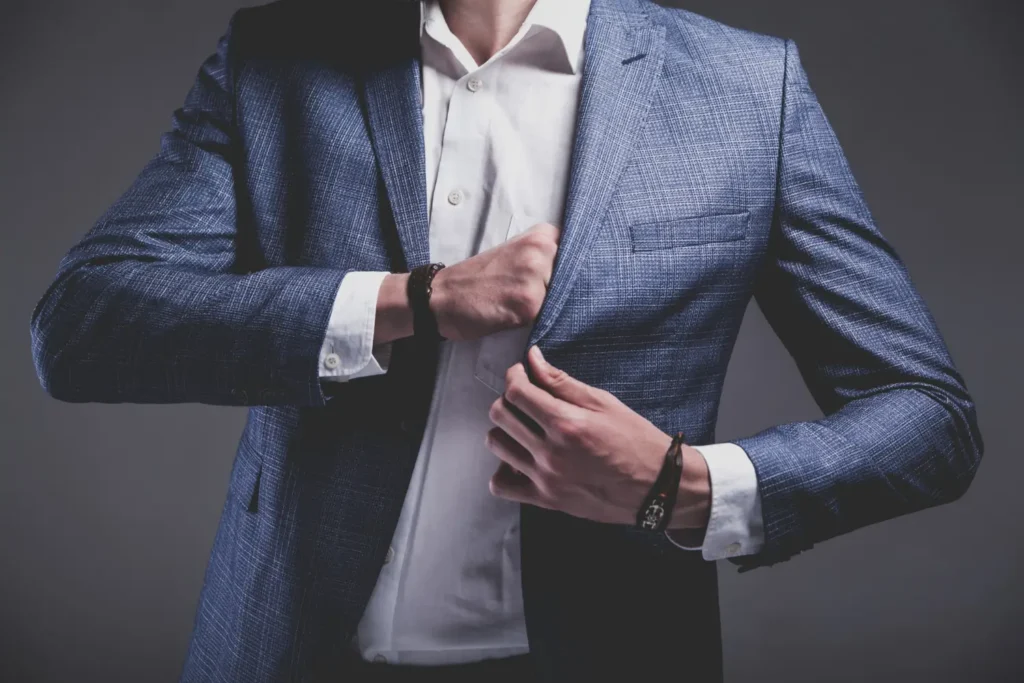
The hidden pocket is a discreet and practical option. It’s sewn inside the garment, keeping it out of sight. They are common in suit jackets and sportswear.
Inside suit jackets, hidden pockets are used to carry small, important items like wallets or business cards. In sportswear, they’re ideal for holding keys or money during exercise.
This type of pocket is a clever way to enhance functionality. It doesn’t affect the garment’s exterior design and provides extra storage.
Incorporate hidden pockets into your fashion developments for a surprising and functional touch!
Learn more: How to create high-precision activewear sewing patterns?
8) Coin pocket
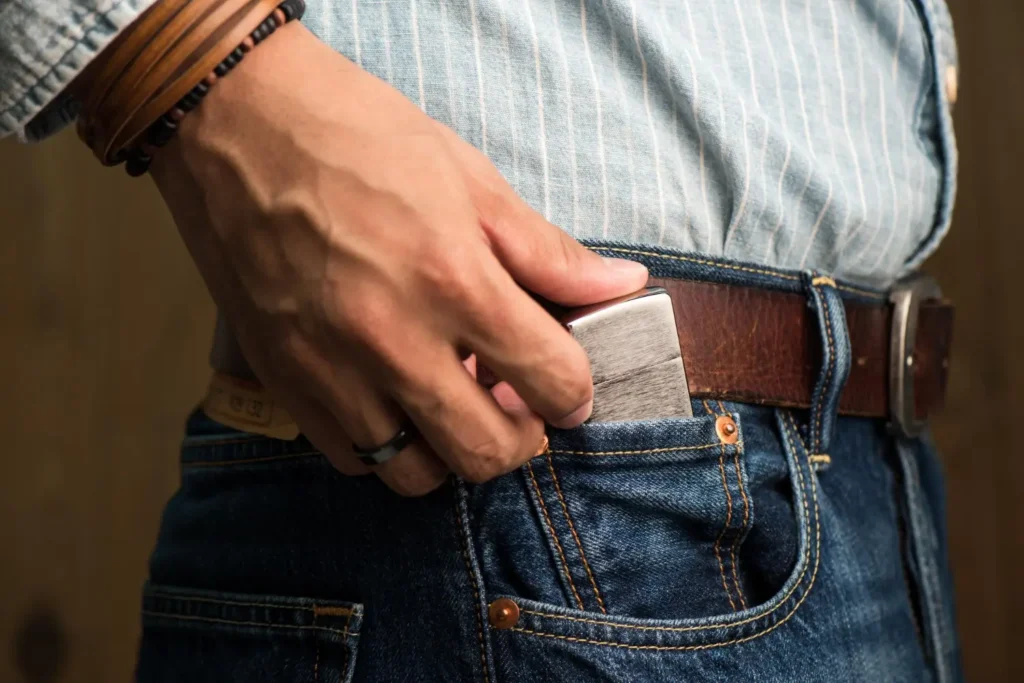
Those small, extra compartments on the front of jeans are coin pockets. While they might seem unimportant, they have an interesting history. Originally, they were created to hold pocket watches.
This type of pocket is practical for carrying small items like coins or keys. Its compact size makes it easy to access without adding bulk to the garment.
Including a coin pocket in your pattern is easy. It’s usually placed inside a larger pocket, like the front pocket of jeans. You can adjust its size to match the garment’s style.
Ready to transform your pattern making process? Learn how to streamline your workflow with digital solutions. Download our free guide now!
How to choose the ideal type of pocket for every garment?
You’ve learned about different types of projects. Now, let’s dive into how to select the ideal pocket for your project. Here are some helpful tips:
Understand your target audience
The first step is to know who will wear the garment. Are they looking for practicality or style? Understanding your audience helps you choose the right type of pocket.
For casual wear, larger pockets like kangaroo or patch pockets are great. For formal wear, welt or flap pockets add sophistication.
Tailoring the pocket to your audience’s needs makes the garment more appealing.
Think about the pocket’s purpose
Every pocket has a purpose. Some are for carrying items, while others add design details. The pocket type should match the intended use of the garment.
If you need extra storage, choose a large pocket like a cargo or bellows pocket. For a clean, minimal look, opt for a welt or slash pocket. The pocket’s purpose determines its size and placement.
Consider how the pocket will be used daily. Will it hold small items, or is it purely decorative? This will help you decide on the best pocket type for the garment.
Consider the fabric’s properties
The fabric you choose plays a big role in the pocket design. Some fabrics are better suited for certain types of pockets. For example, heavy fabrics like denim work well with patch pockets.
Light fabrics, like silk or chiffon, may not hold the shape of a bulky pocket. In these cases, a smaller, more delicate pocket, like a welt pocket, is a better choice.
Make sure the fabric can support the pocket without losing its shape. The right fabric and pocket combination ensures both durability and style.
How can technology assist in developing different types of pockets?
Technology has changed how we design and create pockets. Pattern-making software allows designers to experiment with different pocket shapes, sizes, and placements on a computer screen.
These programs also help to create accurate patterns for complex pocket styles. It reduces the need for time-consuming manual drafting and adjustments.
You can easily modify pocket dimensions and add details like flaps or pleats. It’s also easy to simulate how the pocket will interact with the rest of the garment.
Furthermore, 3D modeling enables professionals to create virtual prototypes of garments with different types of pockets.
This allows for a more realistic assessment of the pocket’s appearance, functionality, and fit.
Create and simulate different types of pockets with Audaces solutions
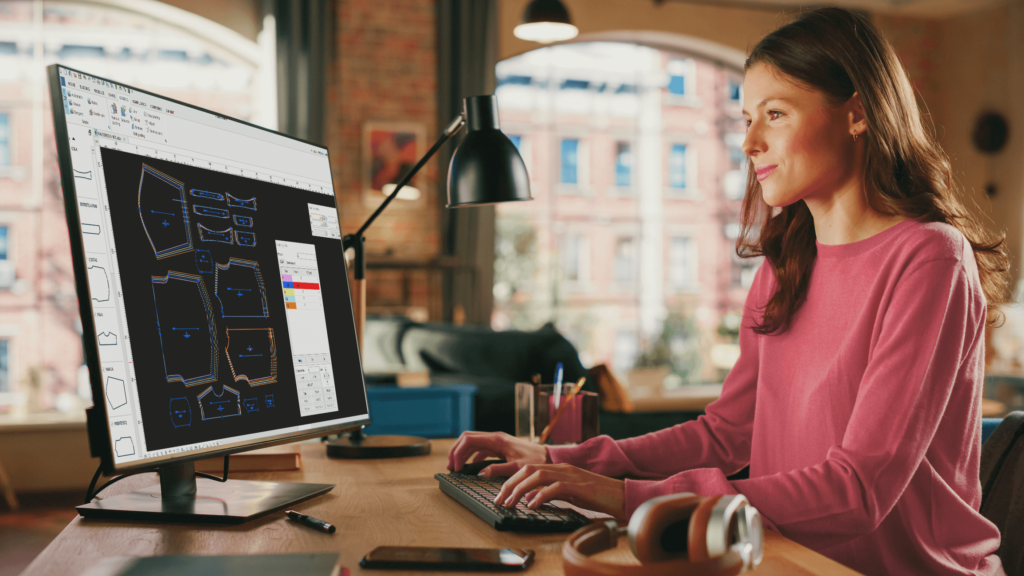
From hidden to kangaroo, our Audaces solutions let you create all pocket styles effortlessly. It’s all just a few clicks away!
Audaces Pattern
For pattern makers looking for excellence, Audaces Pattern is the perfect solution. It ensures the pattern design reaches a new level of efficiency and precision.
With its versatile approach, it’s possible to develop high-quality patterns, regardless of complexity.
Refine every detail to perfection, ensuring that your creative vision translates into patterns. This advanced solution will assist you with all your pattern making endeavors!
Audaces 3D
Audaces 3D is ideal for pattern makers to bring creations to life in a 3D mannequin.
You can test your digital pattern before committing to a physical sample. Save time and resources by identifying issues early in the process.
With a range of tools and possibilities, this software transforms the development processes.
It enables you to shape your ideas directly in a digital space, gaining agility and quality in deliveries.
Want to stay up to date on the latest fashion industry news? Subscribe to our newsletter!
FAQ
Pockets are more than just a place to store items. Depending on their type and placement, they serve different functions, like a decorative touch or creating a more balanced look.
Side seam pocket, patch pocket, welt pocket, flap pocket, kangaroo pocket, slash pocket, hidden pocket, and coin pocket.
Understand your target audience, think about the pocket’s purpose, and consider the fabric’s properties.










